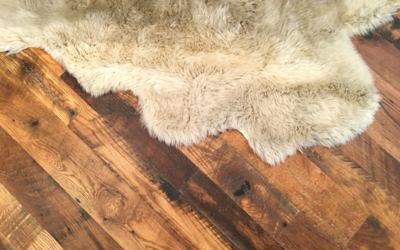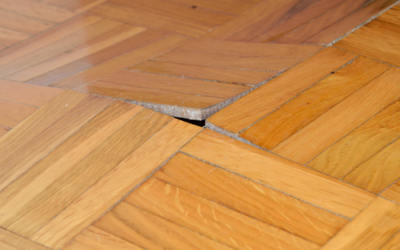Reviving the Beauty of Your Home with Hardwood Floor Resanding: A Complete Guide
Hardwood floor resanding is the process of removing the top layer of your hardwood floors to reveal a fresh, smooth surface. Over time, hardwood floors can become worn, scratched, and damaged from everyday use. Resanding is a way to restore the beauty and functionality of your floors by removing imperfections and creating a smooth, even surface.
There are several benefits to resanding your hardwood floors. First and foremost, it can significantly improve the appearance of your floors. Scratches, dents, and other damage can make your floors look worn and aged. By resanding them, you can remove these imperfections and restore the natural beauty of the wood.
Resanding also allows you to change the color or finish of your floors. If you’re tired of the current look of your hardwood floors, resanding gives you the opportunity to start fresh and choose a new stain or finish that better suits your style and decor.
Additionally, resanding can extend the lifespan of your hardwood floors. By removing the top layer of damaged wood, you’re essentially starting with a clean slate. This can help prevent further damage and ensure that your floors last for many years to come.
Key Takeaways
- Hardwood floor resanding is a process of removing the top layer of wood to reveal a fresh surface and restore the floor’s natural beauty.
- Signs that your hardwood floors need resanding include scratches, dents, and discoloration that cannot be fixed with a simple cleaning or buffing.
- Choosing the right sanding equipment is crucial for achieving a smooth and even finish, and includes selecting the right sandpaper grit, sander type, and edger.
- Preparing your home for resanding involves clearing out furniture and prepping the space to minimize dust and debris.
- The resanding process involves several steps, including sanding, staining, and finishing, and should be done carefully to avoid common mistakes and achieve the desired result.
Signs That Your Hardwood Floors Need Resanding: How to Identify Them
There are several signs that indicate it’s time to resand your hardwood floors. The first and most obvious sign is visible scratches, dents, or other damage on the surface of the wood. Over time, furniture, pets, and everyday foot traffic can cause wear and tear on your floors. If you notice deep scratches or dents that are affecting the overall appearance of your floors, it’s likely time for a resanding.
Another sign that your hardwood floors need resanding is unevenness or warping. If you notice that certain areas of your floor are higher or lower than others, it could be a sign that the wood has warped or shifted over time. Resanding can help level out these uneven areas and create a smooth, even surface.
Fading or discoloration is another sign that your hardwood floors may need resanding. Over time, exposure to sunlight and other elements can cause the color of your floors to fade or change. Resanding can remove the top layer of discolored wood and reveal a fresh, vibrant surface.
Choosing the Right Sanding Equipment: A Guide to Sandpaper, Sanders, and Edgers
When it comes to resanding your hardwood floors, choosing the right sanding equipment is crucial. The first thing you’ll need is sandpaper. There are several different types of sandpaper available, each with its own grit level. Coarse grit sandpaper is typically used for removing deep scratches and imperfections, while finer grit sandpaper is used for smoothing out the surface.
In addition to sandpaper, you’ll also need a sander and an edger. A drum sander is typically used for large areas of flooring, while an orbital sander is better suited for smaller, hard-to-reach areas. An edger is used to sand along the edges of the room where the sander cannot reach.
When choosing a sander and edger, it’s important to consider the size of your project and your level of experience. If you’re tackling a large area or have little experience with sanding equipment, it may be best to rent professional-grade equipment. However, if you’re comfortable with DIY projects and have a smaller area to sand, you may be able to get by with a smaller, more affordable sander.
It’s also important to take safety precautions when using sanding equipment. Always wear protective goggles and a dust mask to protect your eyes and lungs from dust particles. Additionally, make sure to follow the manufacturer’s instructions for operating the equipment and be mindful of any electrical cords or other hazards in the area.
Preparing Your Home for Resanding: Tips for Clearing Out Furniture and Prepping the Space
| Task | Time Required | Tools Needed |
|---|---|---|
| Remove furniture | 1-2 hours | Furniture sliders, moving blankets, screwdriver, pliers |
| Clean the space | 30 minutes – 1 hour | Broom, dustpan, vacuum, cleaning solution, rags |
| Protect floors and walls | 30 minutes – 1 hour | Drop cloths, painter’s tape, plastic sheeting |
| Sand the floors | 1-2 days | Floor sander, sandpaper, dust mask, ear protection |
| Clean up dust | 1-2 hours | Vacuum, dust mop, cleaning solution, rags |
Before you can begin resanding your hardwood floors, you’ll need to prepare your home and clear out any furniture or obstacles in the way. Start by removing all furniture from the room, including rugs, curtains, and any other items that could get in the way of the sanding process.
If you have heavy furniture that cannot be easily moved, consider using furniture sliders or pads to protect your floors and make it easier to move the furniture out of the way. It’s also a good idea to cover any remaining furniture or belongings with plastic sheets or drop cloths to protect them from dust and debris.
Next, take the time to protect your walls and other surfaces from damage. Use painter’s tape to cover baseboards, door frames, and any other areas that could be accidentally scratched or damaged during the sanding process. It’s also a good idea to cover air vents and electrical outlets with plastic sheeting to prevent dust from getting inside.
Finally, prepare your floors for sanding by removing any nails or staples that may be sticking up. Use a nail set or hammer to sink any protruding nails below the surface of the wood. This will ensure that the sanding process goes smoothly and prevents damage to your sandpaper or sanding equipment.
The Resanding Process: Step-by-Step Instructions for Sanding and Finishing Your Floors
Once you’ve prepared your home and cleared out the space, you’re ready to begin the resanding process. Here is a step-by-step guide to sanding and finishing your hardwood floors:
1. Start by sanding the main area of your floor using a drum sander. Begin in one corner of the room and work your way across, moving in a straight line. Make sure to overlap each pass slightly to ensure even sanding. Repeat this process until the entire floor has been sanded.
2. Once the main area of your floor has been sanded, use an edger to sand along the edges of the room where the drum sander cannot reach. Start in one corner and work your way around the perimeter of the room, making sure to overlap each pass for even sanding.
3. After sanding with the drum sander and edger, switch to a finer grit sandpaper and repeat the process. This will help smooth out any remaining imperfections and create a smooth, even surface.
4. Once you’re satisfied with the sanding, it’s time to apply finish and sealant to your floors. Choose a finish that suits your style and needs, whether it’s a clear coat for a natural look or a stain for a different color. Apply the finish according to the manufacturer’s instructions, using a brush or roller for larger areas and a small brush for edges and corners.
5. Allow the finish to dry completely before applying additional coats or walking on the floors. This can take anywhere from a few hours to a few days, depending on the type of finish you’re using and the humidity levels in your home.
6. Once the finish is dry, apply a second coat if desired. This will help protect your floors and ensure a long-lasting finish.
7. Finally, allow the finish to cure for at least 24 hours before moving furniture back into the room or placing rugs on the floor. This will give the finish time to harden and prevent any damage or marks from occurring.
Common Mistakes to Avoid When Resanding Your Hardwood Floors
While resanding your hardwood floors can be a rewarding DIY project, there are several common mistakes that you’ll want to avoid. One of the most common mistakes is over-sanding or under-sanding. Over-sanding can remove too much of the top layer of wood, leaving your floors thin and vulnerable to damage. Under-sanding, on the other hand, can leave behind imperfections and unevenness. It’s important to find the right balance and take your time to ensure that you’re sanding your floors evenly and effectively.
Another common mistake is skipping steps in the resanding process. It can be tempting to rush through the sanding process or skip steps in order to save time, but this can lead to subpar results. Each step in the resanding process is important and contributes to the overall success of the project. Take the time to properly prepare your floors, sand them evenly, and apply multiple coats of finish for the best results.
Finally, one of the biggest mistakes you can make when resanding your hardwood floors is not allowing enough time for drying and curing. It’s important to follow the manufacturer’s instructions for drying and curing times and give your floors ample time to dry before moving furniture back into the room or placing rugs on the floor. Rushing this step can result in damage to your newly refinished floors and require additional work to fix.
DIY vs. Professional Resanding: Pros and Cons of Each Option
When it comes to resanding your hardwood floors, you have the option to do it yourself or hire a professional. Both options have their pros and cons, so it’s important to consider your skill level, budget, and time constraints before making a decision.
One of the main benefits of doing it yourself is cost savings. Hiring a professional can be expensive, especially if you have a large area to sand. By doing it yourself, you can save money on labor costs and potentially invest in higher-quality materials or finishes.
Another benefit of DIY resanding is the satisfaction of completing a project on your own. If you enjoy DIY projects and have experience with home improvement tasks, resanding your hardwood floors can be a rewarding and fulfilling project. It allows you to take control of the process and customize the results to your liking.
However, there are also some downsides to DIY resanding. It can be a time-consuming and labor-intensive process, especially if you have a large area to sand. It requires patience, attention to detail, and the proper tools and equipment. If you’re not comfortable with these aspects or don’t have the time to dedicate to the project, hiring a professional may be a better option.
Hiring a professional has its own set of benefits. Professional floor sanders have the experience, expertise, and equipment necessary to achieve high-quality results. They can ensure that your floors are sanded evenly and effectively, and they have access to professional-grade finishes and sealants that may not be available to the average homeowner.
Additionally, hiring a professional can save you time and effort. They will handle all aspects of the resanding process, from preparing your home to applying the finish. This allows you to focus on other tasks or enjoy your free time while knowing that your floors are in capable hands.
However, there are also some drawbacks to hiring a professional. The cost can be prohibitive for some homeowners, especially if you have a large area to sand. Additionally, you may have less control over the final results and may need to compromise on certain aspects of the project.
Ultimately, the decision between DIY and professional resanding depends on your individual circumstances and preferences. Consider your budget, skill level, and time constraints before making a decision.
Maintaining Your Newly Resanded Floors: Tips for Cleaning and Care
Once you’ve resanded your hardwood floors, it’s important to take steps to maintain their beauty and protect them from damage. Here are some tips for cleaning and caring for your newly resanded floors:
1. Regularly sweep or vacuum your floors to remove dirt, dust, and debris. This will prevent scratches and keep your floors looking clean and polished.
2. Use a damp mop or microfiber cloth to clean your floors. Avoid using excessive water or harsh cleaning products, as these can damage the finish. Instead, use a mild cleaner specifically designed for hardwood floors.
3. Wipe up spills immediately to prevent staining or warping of the wood. Use a soft cloth or paper towel to blot the spill, rather than rubbing it, which can spread the liquid and cause further damage.
4. Place mats or rugs in high-traffic areas to protect your floors from wear and tear. Make sure to use mats with non-slip backing to prevent accidents.
5. Avoid wearing high heels or shoes with sharp or abrasive soles on your hardwood floors. These can cause scratches and dents in the wood.
6. Use furniture pads or felt protectors on the legs of your furniture to prevent scratches and dents when moving or rearranging items.
7. Keep humidity levels in your home consistent to prevent warping or shrinking of the wood. Use a humidifier in dry climates or during the winter months, and use a dehumidifier in humid climates or during the summer months.
By following these tips, you can keep your newly resanded floors looking beautiful and extend their lifespan.
Enhancing the Look of Your Resanded Floors: Ideas for Staining, Painting, and Refinishing
Resanding your hardwood floors gives you the opportunity to change the look of your floors and customize them to your liking. Here are some ideas for enhancing the look of your resanded floors:
1. Staining: If you want to change the color of your hardwood floors, staining is a great option. There are many different stain colors available, ranging from light to dark, that can completely transform the look of your floors. Before applying stain, make sure to test it on a small, inconspicuous area to ensure that you’re happy with the color.
2. Painting: If you’re feeling bold and want to make a statement with your floors, consider painting them. Painting your hardwood floors can give them a unique and personalized look. Choose a color that complements your decor and apply multiple coats of paint for durability. Finish with a clear coat or sealant to protect the paint and create a smooth surface.
3. Refinishing: If you love the natural look of your hardwood floors but want to enhance their beauty, refinishing is a great option. Refinishing involves applying a new coat of finish or sealant to your floors to restore their shine and protect them from damage. Choose a finish that suits your style and needs, whether it’s a glossy finish for a high-shine look or a matte finish for a more subtle appearance.
When choosing the right finish or stain for your resanded floors, consider factors such as the type of wood, the amount of natural light in the room, and your personal style preferences. It’s also a good idea to test different finishes or stains on a small area of your floors before applying them to the entire space.
Cost Considerations: How Much Does Hardwood Floor Resanding Typically Cost?
The cost of resanding your hardwood floors can vary depending on several factors, including the size of the area, the condition of the floors, and whether you choose to do it yourself or hire a professional.
If you choose to do it yourself, the cost will primarily be the cost of your time and effort.
If you’re considering hardwood floor resanding, you may also be interested in learning about the benefits of using an array of wood stains to enhance the beauty of your floors. In a recent article, we explore how different wood stains can transform the look of your hardwood floors, from light and airy to rich and dark. Discover how to choose the right stain for your home and create a stunning visual impact. Check out the article here.
FAQs
What is hardwood floor resanding?
Hardwood floor resanding is the process of removing the top layer of a hardwood floor to reveal a fresh layer of wood. This process involves sanding the floor with a specialized machine to remove scratches, stains, and other imperfections.
Why should I consider hardwood floor resanding?
Hardwood floor resanding can restore the beauty and durability of your hardwood floors. It can remove scratches, stains, and other imperfections that may have accumulated over time. Resanding can also help to extend the life of your hardwood floors.
How often should I resand my hardwood floors?
The frequency of resanding your hardwood floors depends on the amount of foot traffic and wear and tear they receive. Generally, hardwood floors should be resanded every 10-15 years.
Can I resand my hardwood floors myself?
While it is possible to resand your hardwood floors yourself, it is recommended that you hire a professional. Resanding requires specialized equipment and expertise to ensure that the job is done correctly and without damaging the floors.
How long does hardwood floor resanding take?
The length of time it takes to resand hardwood floors depends on the size of the area being sanded and the condition of the floors. Generally, resanding can take anywhere from one to three days.
What should I do to prepare for hardwood floor resanding?
Before resanding your hardwood floors, you should remove all furniture and other items from the room. You should also cover any vents or openings to prevent dust from spreading throughout your home.








